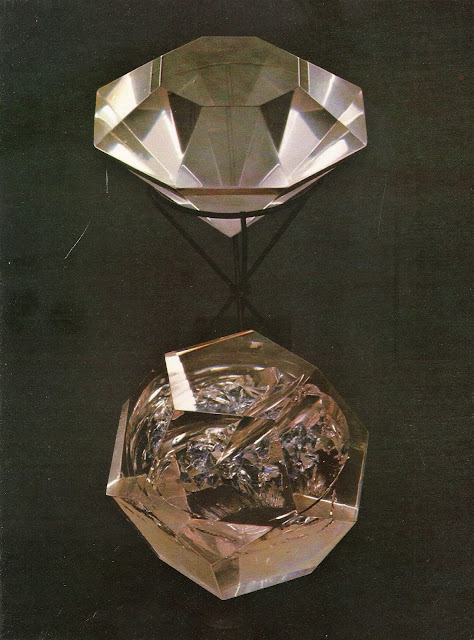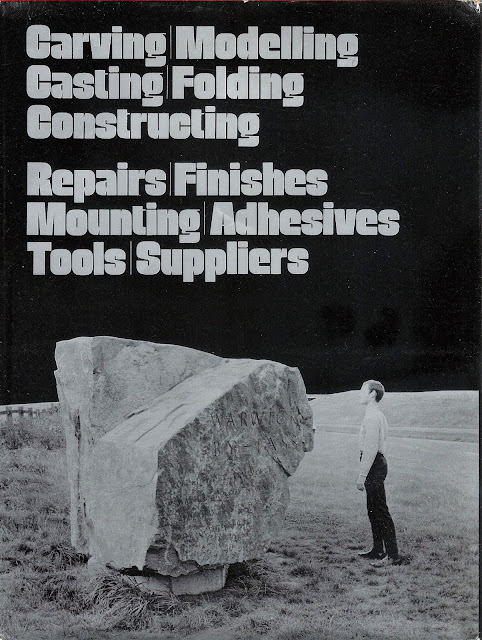'Expanded
Cinema' is the term coined by writer Gene Youngblood to describe the
group of filmmakers in the 1960s who shifted the boundaries of what
experimental film could be. They would transcend the flat, single
projection movie screen in favour of multi-sensory experiences and
unique viewing environments. Youngblood described their work as an
extension of “man's ongoing historical drive to manifest his
consciousness outside of his mind, in front of his eyes.” Likewise,
the content of many of these films eschewed traditional narrative in
favour of abstract thought, ruminations on the cosmos, the
subconscious, dreams and nightmares. It is with this is mind that I
approached this list, the idea of psychedelia as an expansion of
consciousness, through any means. I've chosen films that are easily
available to view, so more well-known films may be omitted. Some of
the films below prefigure the idea of expanded cinema, but certainly
laid the foundations for the movement to come. It is by no means
intended to be an exhaustive list, more a primer that will hopefully
lead you on a path of psychedelic wonderment!
MARY
ELLEN BUTE – Synchronomy No. 2 (1935/36)
Mary
Ellen Bute was one of the first female experimental film makers, and
an exponent of “visual music”, the synchronisation of sound and
image in a startling and imaginative form. Created through light
refractions and lenses, Synchronomy
No. 2 urges
the viewer to imagine “seeing sound,” before soft abstract shapes
and shadows combine and rotate to the sounds of 'The Evening Star' by
Wagner. Futurist constructions meld into crystal facets, animated
blocks build staircases and gothic arches, a female form, disjointed
through a prism, slowly reveals itself as a statue of Venus. Neither
the image nor the music is defined as being more significant than the
other, rather the two converge in an organic manner and the effect is
mesmerising, almost dreamlike.
Bute's
work would go on to incorporate more complex shapes and movements,
eventually utilising the oscilloscope to consolidate her ideas of
combining sound and image. Her films were a huge
influence
on a generation of filmmakers, most significantly Norman Mclaren and
his playful visual symphonies of dancing lines and shapes.
HARRY
SMITH - Film #11: Mirror Animations (1957)
Harry
Smith's prolific work as an experimental animator is often eclipsed
by his other numerous creative endeavours, as painter, alchemist,
anthropologist and folk music archivist, yet this sprawling body of
work alone is enough to solidify his standing as some kind of
beat-era celluloid sorcerer. His own psychedelic experiences while
listening to music inspired him to attempt to capture, in a dynamic
form, the shapes and images his mind conjured up. The resulting films
combined mysticism, the occult, alchemy, dada and surrealism in
Smith's unique vision. They were created with a combination of
collage, painted film and multi-layered projections onto three-
dimensional constructions. The effect in #11:
Mirror Animations
is truly enchanting, with shapes and objects dancing around the
frame, choreographed to the music of Thelonius Monk (who
undrestandably nicknamed Smith “the magician”). Smith's visual
language is at once absurd and sublime, a mass of symbols fighting to
be deciphered. Any attempt at interpreting meaning is soon overcome
by a feeling of awe and pure wonder at the stream-of-consciousness
images. He's less the filmmaker, more the magic lantern showman,
orchestrating his own phantasmagoric visions to the amazement of
onlookers.
STAN BRAKHAGE –
Dog Star Man (1959-64)
Watching
a Stan Brakhage film is akin to experiencing life in it's entirety,
from overwhelming beauty to disorienting confusion and all points
between. Colours flicker and pulsate, shapes contrast and collide,
focus drifts from the semi-recognisable to the completely abstract.
Brakhage thought of film as a reflection of vision, not only the open
eye, but “closed-eye vision”, the abstract patterns and pulses of
colour one sees with eyes closed, visual memories, imaginations,
hallucinations and dreams. In addition to conventional camera use, he
employed a dazzling array of experimental techniques: painting,
scratching and bleaching the film; exposing objects and textures onto
the film before printing; and even growing mould onto the film
surface.
Dog
Star Man hits the viewer
with a barrage of images, the central repeating motif of a man
climbing a hill and cutting down a tree is distorted, refracted,
interspersed and overlaid with footage of solar winds, the moon and
stars, a beating heart and bloodstream. He shifts focus between the
telescopic and the microscopic, outer space and inner space, to
meditate on his own place in the cosmos.
JORDAN BELSON –
Samadhi (1967)
Jordan
Belson helped pioneer the concept of the psychedelic lightshow
through his role as visual coordinator of the Vortex
Concerts,
multi-projector film performances accompanying contemporary
electronic sounds and musique
concrète held
at the Morrison Planetarium in San Francsico during the late 50s.
Although initially inspired by his own psychedelic experiences,
Jordan Belson's films sought to capture something more transcendental
as he evolved as a filmmaker. As well as references to Eastern
mysticism (the mandala is a recurring symbol in his early work),
Belson's immersion in meditation is explored in Samadhi
(which
is Sanskrit for “that state of consciousness in which the
individual soul merges with the universal soul”). There is
something truly cosmic about Samadhi,
galaxies expand and dissipate, heavenly bodies shimmer and gaseous
forms swirl. We appear to travel to the heart of a star, as particles
fly past us and an intense glowing colour field fills the screen.
This otherworldly imagery is made all the more remarkable as it was
created using Belson's home-built contraption incorporating an old
X-ray machine, various rotating tables, lights, motors, lenses and
prisms, and filmed in real time. The music was also created by Belson
on electronic equipment and works in complete harmony with the
visuals, soundtracking the cosmic events we are witness to. The sound
is so integral to the imagery that Belson said of it, “you don't
know if you're seeing or hearing it.” Belson's work was a huge
influence on Stanley Kubrick and Douglas Trumbull when creating the
stargate sequence for “the ultimate trip”, 2001.
SCOTT BARTLETT –
OffOn (1968)
Released
the same year as 2001,
OffOn
by Scott Bartlett could be a spiritual cousin of Kubrick's sci-fi
vision. It's largely considered to be one of the first works to
combine film and video together, being filmed in monochrome, then
coloured by hand and processed using the emerging video technology of
the time. It begins with the close-up of an eyeball, over-saturated
with colour, which flickers and throbs to the sound of a human
heartbeat. Colours are polarised, images cross-pollinated using video
feedback as we are drawn further into the eye. Vibrations gather
around a growing force-field which expands and gives birth to a human
figure, dancing along to a mirrored version of itself. Bird
silhouettes swoop into the frame, encircling the disintegrating
dancer, who begins to break off into geometric segments revealing a
close-up female face. This metamorphosis continues, images fizzing
and degrading, decaying off into infinity until a final burst of
energy fades to nothingness. OffOn
is the perfect representation of film as an extension of human
consciousness, a celluloid journey through the eye to the centre of
the mind, fed through electronic circuits and cathode ray tubes, then
back into our retinas through the medium of light - a feedback loop
of human perception.
LAWRENCE JORDAN –
Orb (1973)
An
associate of Stan Brakhage, Lawrence Jordan spent a portion of his
early artistic career as an assistant to Joseph Cornell, and his
films seem to belong to the same tradition, almost like Cornell's
boxes opened up and brought to life in celluloid form. Jordan was a
pioneer of cut-out animation, collaging 19th
century engravings and Victoriana and bringing them to life with the
same kaleidoscopic wonder as a psychedelic light show, the
fantastical visions of Jules Verne skyrocketed into the psychedelic
age. Orb
takes us directly through the looking glass, following a balloon-like
object as it passes through fragmented Gustave
Doré
landscapes and architecture, flickering and transforming into the
sun, moon and stars, alchemic symbols and planets. The symbols are
repeated in rapid-fire colour overlays, taking us to increasingly
fantastical landscapes, until the orb of the title expands and
envelops the screen. This journey is less about specific place and
time, moreover a transformation between different dream-states, a
free-association of imagery Jordan described as “theatre of the
mind.”
YouTube Playlist:
Further Reading
Expanded
Cinema – Gene
Youngblood, 1970, Studio Vista, SBN 289 70113 9
The
Underground Film –
Sheldon Reenan, 1967, Studio Vista, SBN 289 37061 2
https://expcinema.org/
- A great resource for experimental film, past and present.
http://www.centerforvisualmusic.org/
- Film archive holding the work of Jordan Belson, Mary Ellen Bute and
Oskar Fischinger, amongst others.
http://www.ubu.com/film/
- An extensive archive of avant garde films, animations and
documentaries.
http://lawrencecjordan.com
– Personal site of Lawrence Jordan, with extensive biography and
filmography.
https://www.nfb.ca
– Online archive of the National Film Board of Canada, featuring
much of the work of Norman McLaren.























































